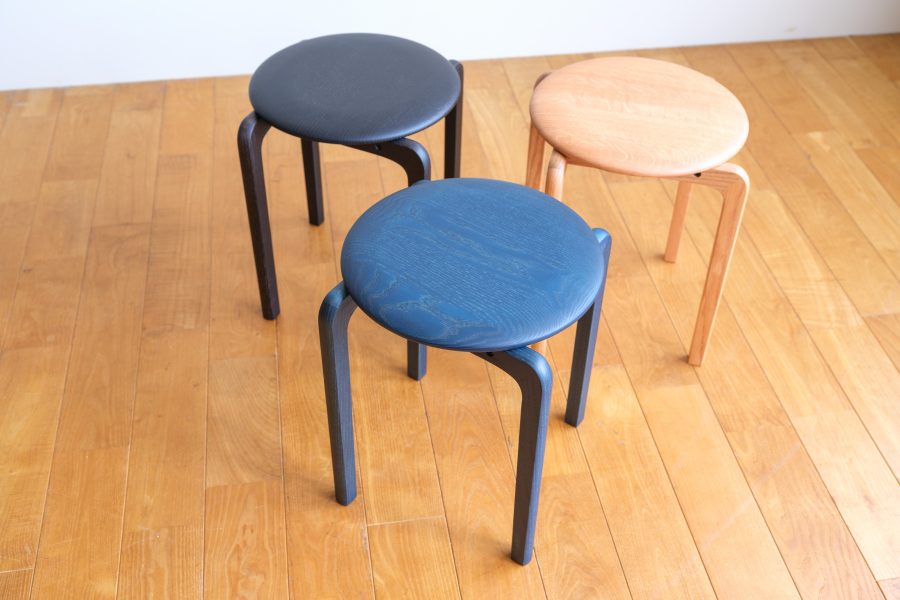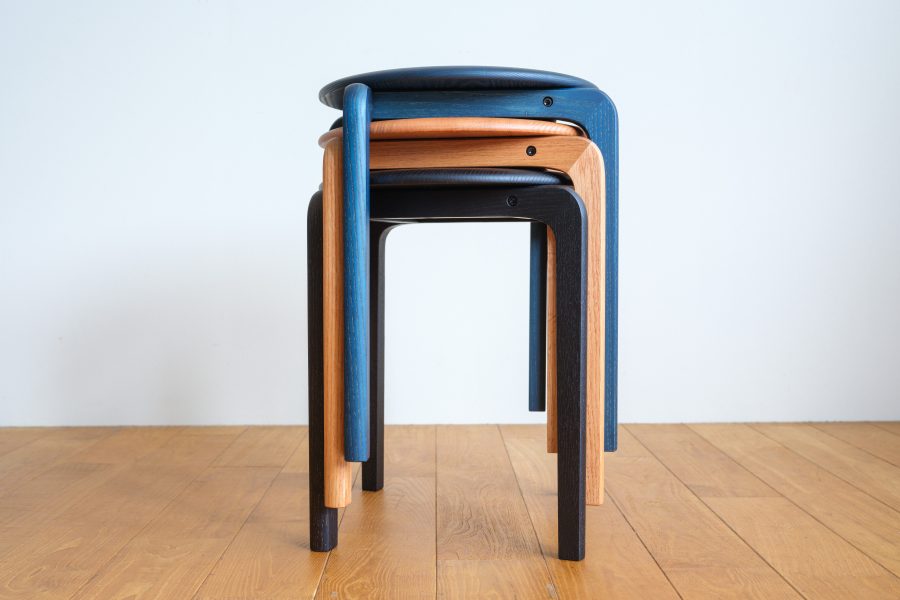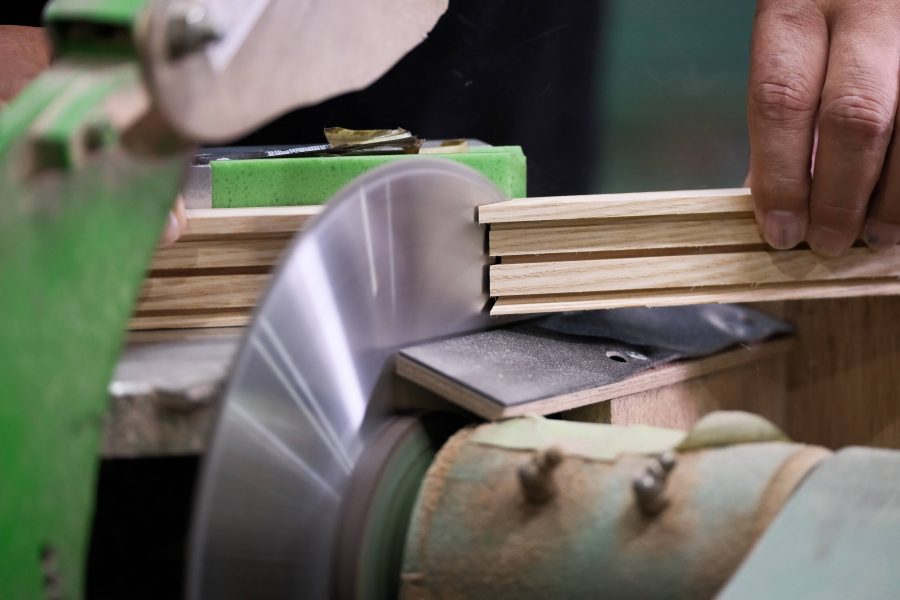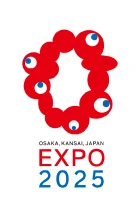
(back left) a stool dyed with iron-mordant persimmon tannin
In preparation for the Expo, which attracts many visitors from both Japan and overseas, the stools were redesigned from three legs to four to improve safety and increase their strength. The simple form, made using the exceptional skills of the picture frame maker “Dentou Kougei,” remains unchanged, exuding a dignified presence. Plant-based dyes are also used to highlight the natural beauty of the wood. For the indigo dyeing, they are collaborating with a maker in Fukuyama City, which handles everything from cultivation to dyeing. That deep, natural blue is just something special to that area.
Kotani, who knows the town’s charms inside and out, also focuses on experience-based events. He believes the best way to share the appeal of Fuchu is to have people visit the town to experience its culture and nature firsthand. He wants visitors to Fuchu to feel the stories behind the stools. At Dentou Kougei, participants can try making stools or picture frames after observing processes like cutting, polishing, and painting in the studio. The labor-intensive parts are provided in a kit, allowing participants to complet processes that would normally take several days in a single day, and they can take their creations home.
Furthermore, they are keen to highlight the region’s culinary attractions. So Koishiki, a Japanese-style restaurant renovated from a former Japanese-style restaurant and inn established in 1872 and registered as a tangible cultural property of Japan, features a chef recognized with a Michelin star in 2013 and 2018. He serves dishes utilizing locally sourced ingredients. Additionally, they are developing guided tours into the surrounding hills, where participants can enjoy distilling scents. The idea is to have people enjoy boxed lunches while sitting on the stools in the natural setting.
Fuchu is yet to be recongnized as a tourist destination, so the city is filled with distinctiveness. In Joge, a former “Tenryo” (a territory under direct Edo shogunate control), one finds a remarkably preserved merchant district nestled within the Bingo mountains, where historical elements seamlessly integrate into the daily landscape. The townscape, characterized by its white-walled structures, “namako” walls, and latticed doors, presents a blend of traditional formality and familiar charm. They are also considering collaborative experiences developed with the Joge Tenryo Tourism initiatives of the Tenryo Joge Town Development Association to allow an authentic glimpse into local daily life.
The Co-Design Challenge is aimed at building future lifestyles (communities) in Japan. Kotani explained, “We just brought together what Fuchu already had.” The system they are creating to analyze the city and unlock its potential will take root and be used for years to come. They have made big strides in building a sustainable foundation for Fuchu.
Dentou Kougei’s furniture is designed to complement daily life. The five benches, placed at the Expo, are meant to catch the eye of visitors, inviting them to become part of a story. They will then explore Fuchu and create their own stories and experiences. Kotani is thrilled to see how these new connections will reshape Fuchu and is eager to be part of that journey.

Stools crafted using the techniques of the picture frame maker

Making picture frames in the experience-based event (cutting the mitered corners)
Share this article


